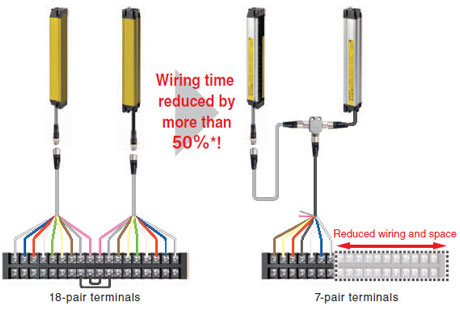How To Mount A Light Curtain?
Key Takeaway
To mount a light curtain effectively, start by attaching the bottom mounting bracket to your chosen surface, ensuring it is level and secure. This foundational step is crucial for the correct alignment of the light curtain. Once the bottom bracket is in place and confirmed to be level, proceed to install the upper mounting bracket. Make sure both brackets are firmly attached to prevent any movement, which could disrupt the operation of the light curtain. After securing the brackets, install the light curtain units into these brackets, ensuring they face each other without any obstructions. This setup ensures optimal performance of the light curtain, maintaining safety around machinery or other hazardous areas.

Overview of Light Curtains and Their Importance
Light curtains are a crucial component of industrial safety, designed to protect personnel from hazards associated with machinery and automated processes. These safety devices consist of multiple beams of light that create an invisible safety barrier around hazardous areas. When any beam is interrupted, indicating the presence of a person or object within the danger zone, the system sends an immediate signal to halt potentially harmful operations. This instant response helps prevent injuries and fatalities, making light curtains essential for maintaining safety standards in environments where interaction between humans and machines is common.

Assessing Your Space for Light Curtain Installation
Before installing a light curtain, it is critical to assess the environment to ensure optimal functionality and safety. Consider the layout of the area, potential obstructions, and the nature of the machinery involved. The distance between the hazard and the light curtain should be calculated based on the stopping time of the machine and the speed at which a person could approach the hazard. Environmental factors such as lighting, ambient electrical noise, and temperature should also be evaluated to prevent false trips or sensor malfunctions.
The Mounting Process Explained
Mounting a light curtain involves securing the transmitter and receiver units directly opposite each other so that the beams span the area to be guarded. It is vital to use sturdy mounts that can withstand the operational vibrations and potential impacts within industrial settings. The units should be mounted at a height that protects the intended safety zone, usually aligned with the height of the hazard. Cables should be routed away from any sources of electrical interference and secured to prevent accidental disconnections or damage.
Integration with Existing Safety Systems
Integrating light curtains with existing safety systems enhances overall protection but requires careful planning and execution. The light curtain’s output should be connected to the machine control system in a manner that ensures the signals it generates can effectively override other commands to stop the machine. This integration often involves configuring safety relays or programmable safety systems to interpret the light curtain’s signals correctly and actuate emergency stops when breaches are detected.
Positioning and Alignment Best Practices
Proper positioning and alignment of the light curtain are critical for reliable operation. The devices must be perfectly aligned to ensure the beams are not interrupted by non-hazardous elements and to minimize false stops. Using laser alignment tools or built-in alignment indicators can help achieve precise positioning. Periodic checks should be made to ensure that alignment is maintained over time, especially in areas with frequent vibrations or temperature fluctuations that could cause drift.
Conclusion
Employing best practices for the installation and maintenance of light curtains is essential for maximizing both safety and operational efficiency. Regularly reviewing and adjusting the positioning, alignment, and integration of the light curtain within the broader safety system helps maintain its effectiveness and reliability. Ensuring that all aspects of the installation are performed meticulously lays the groundwork for a safer working environment, safeguarding both personnel and productivity.
